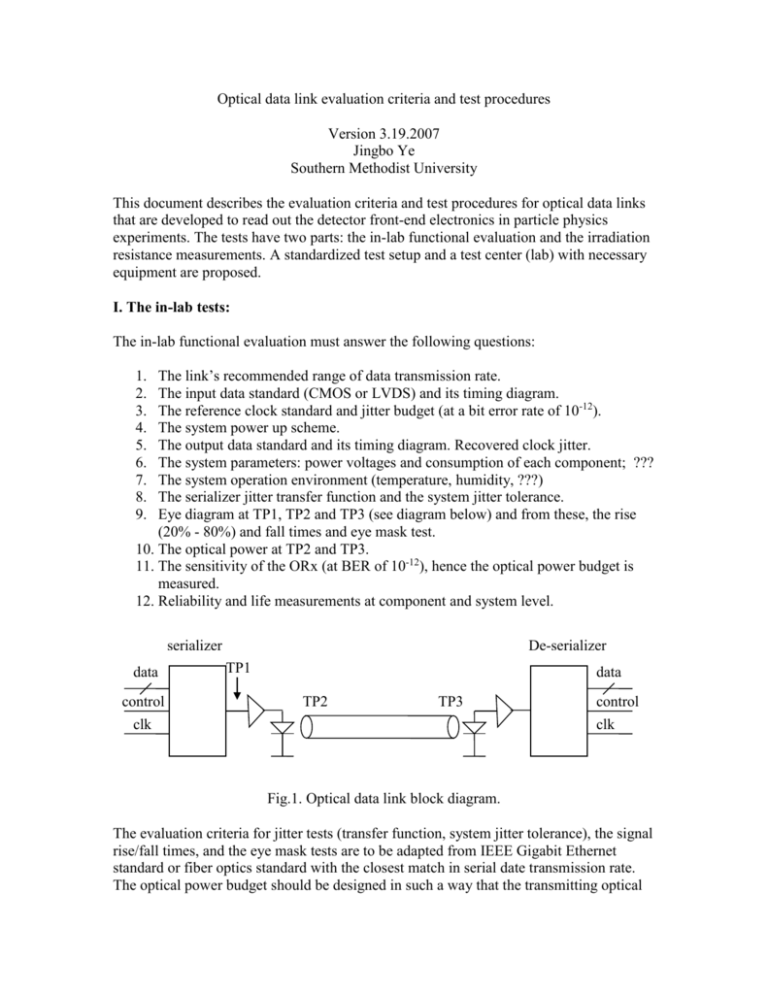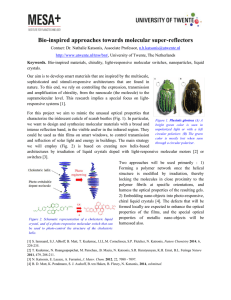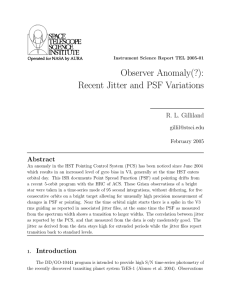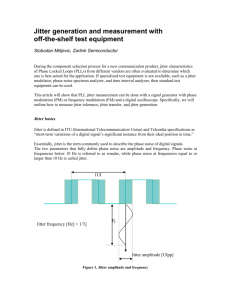Optical data link evaluation criteria and test procedures
advertisement

Optical data link evaluation criteria and test procedures Version 3.19.2007 Jingbo Ye Southern Methodist University This document describes the evaluation criteria and test procedures for optical data links that are developed to read out the detector front-end electronics in particle physics experiments. The tests have two parts: the in-lab functional evaluation and the irradiation resistance measurements. A standardized test setup and a test center (lab) with necessary equipment are proposed. I. The in-lab tests: The in-lab functional evaluation must answer the following questions: The link’s recommended range of data transmission rate. The input data standard (CMOS or LVDS) and its timing diagram. The reference clock standard and jitter budget (at a bit error rate of 10-12). The system power up scheme. The output data standard and its timing diagram. Recovered clock jitter. The system parameters: power voltages and consumption of each component; ??? The system operation environment (temperature, humidity, ???) The serializer jitter transfer function and the system jitter tolerance. Eye diagram at TP1, TP2 and TP3 (see diagram below) and from these, the rise (20% - 80%) and fall times and eye mask test. 10. The optical power at TP2 and TP3. 11. The sensitivity of the ORx (at BER of 10-12), hence the optical power budget is measured. 12. Reliability and life measurements at component and system level. 1. 2. 3. 4. 5. 6. 7. 8. 9. serializer data control clk De-serializer TP1 data TP2 TP3 control clk Fig.1. Optical data link block diagram. The evaluation criteria for jitter tests (transfer function, system jitter tolerance), the signal rise/fall times, and the eye mask tests are to be adapted from IEEE Gigabit Ethernet standard or fiber optics standard with the closest match in serial date transmission rate. The optical power budget should be designed in such a way that the transmitting optical power fulfills the eye-safe requirements (European and the US standards) and in the meantime maximizes the optical power budget. Typically a 10 dB optical power budget is recommended. This is mostly an issue of the ORx sensitivity at component level and in the system implementation level. Reliability and life tests are usually performed at an elevated temperature (but still within the maximum operational range), with all the other parameters (power voltage, humidity, etc) set at recommended values. II. The irradiation tests: The irradiation tests should be performed at component level (example: serializer, laser driver, laser and fiber). Total ionizing dose (TID) effect and single event effect (SEE) tests should be carried out and preferably be carried out separately with X-ray or gamma for TID, and with neutron or proton (above 60 MeV) for SEE. Power consumption at each component under irradiation should be monitored in both TID and SEE tests. For optical fibers, only TID test is necessary. If possible, a system level radiation induced bit error rate (BER) should be measured with all components that will be working in radiation environment being irradiated at the same time. A separate document details the irradiation test procedures and acceptance criteria will be needed. Simplified acceptance criteria are: 1. At the total ionizing dose estimated for the designed life time, radiation induced power consumption increase is negligible or considered acceptable. 2. No single event latch-up or the latch-up can be reset through a system reset pin or power cycle. 3. Single event upset (SEU) rate is considered acceptable. SEU consists of frame loss and single bit flip. Both error types need to be measured and assessed according to the application. 4. The system should run error free after the TID and SEE tests. 5. If annealing is required, the annealing time needs to be normalized to the total dose with a safety factor of ?? to compensate the low dose effect. Test systems (PCBs) can be designed in such a way that they can accommodate both inlab tests and irradiation tests. III. A standardized test setup: A standardized test setup may be adapted to save time in test and to easily compare the test results. A block diagram of the test setup may look like in the following diagram. < 10 cm FPGA based ~ 20 m Parallel PRBS and control bits generation. clock Phase adjustment Error detection and PC interface LVDS CMOS Link transmitter jitter injection CMOS LVDS Link receiver Fig.2. Block diagram of the test setup that can be used for both in-lab and irradiation tests. A portable multi-channel (12 channels per board) linear regulator based DC power with current monitoring capability can also be adapted to complete the test setup for irradiation TID test. Most software used in the tests can be standardized as well. These are the PRBS generation, error detection and PC interface, including the GUI (LabVIEW based) on the PC for control, monitoring and data logging. Again this part of the work can be adapted from the existing package developed at SMU. IV. A test center (lab) with the following test equipment and support: Test centers with adequate equipment can be set up for optical link R&D work for CMS and ATLAS upgrade. The test equipment should include normal lab equipment plus the specialized instruments: 1. Multi-gigabit per second clock and function generator with jitter injection. 2. Multi-GHz real-time oscilloscope with matching probes. 3. Sampling oscilloscope with electrical and optical heads and with jitter analysis software. 4. Serial Bit Error Rate Tester (BERT). 5. Logic analyzer. 6. …… Test centers should also provide a limited staff support related to the equipment, software and firmware the center provides. This support should also include development and modification of software towards special test needs.








